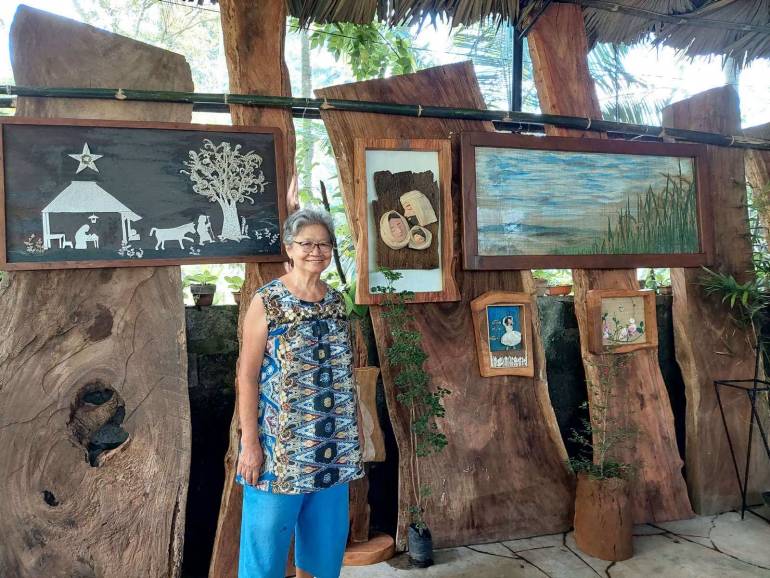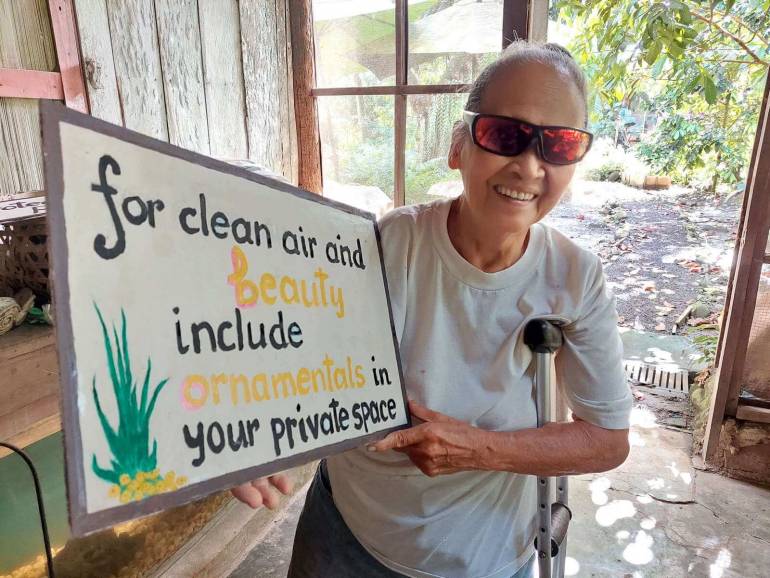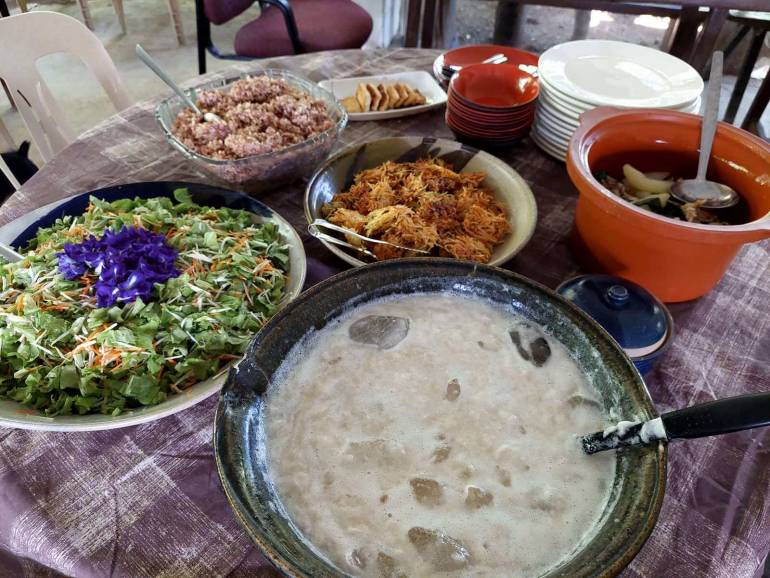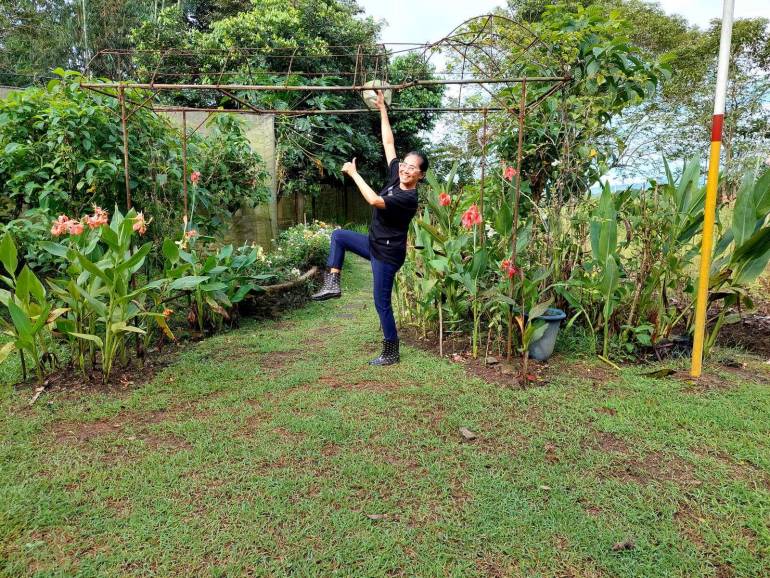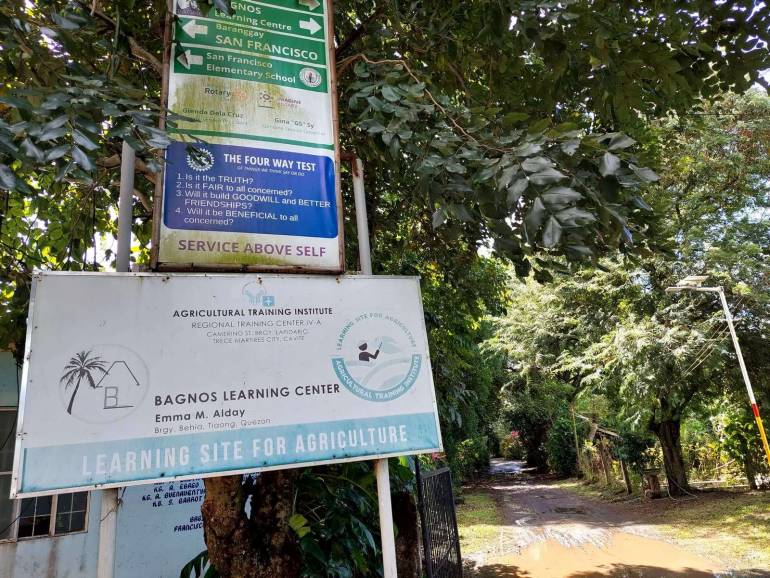Once Upon a Seed: A Glimpse of the Life Journey of Bagnos
“This started our life on the farm. It was not easy. We had no constitution to follow—only a common vision, not even a mission to talk about. Just to live the vows and farm."
Four decades ago, two nuns left their convent and pursued the mission they heard: to evangelize by tilling the land.
In a handwritten booklet she recently launched at Bagnos in Behia, Tiaong, Quezon Province, Philippines, with Sis. Emma M. Alday as author and Sis. Felma R. Lagahit as editor, they defined Bagnos to mean a “least trodden path, usually in a forested area, created by a few travelers seeking an unfamiliar territory, barely visible but for the best grasses that show the ground below.”
From the Religious of the Good Shepherd (RGS) Novitiate, nine of them in their Class ’76 underwent a five-year probation in preparation for their final profession. “In March 1976, after a lengthy discernment process, the Provincial Council announced whose applications were approved. All of them passed except me,” said Alday, who was told the Spirit’s call for her was not within the RGS. Farming is an untrodden life path for the RGS.
“I was among the more vocal about possible and urgent changes encouraged by the Church since the 2nd Vatican Ecumenical Council led by Pope John XXIII back in the 1960s. The most controversial was to allow us to live and serve in rural areas as self-sustaining farmers. They said it was not fair for me to remain and wait until the congregation was ready,” she said.
Alday asked her family for a meeting in December 1975 and explained to them, thanks to her mother, who said, “If God has other plans for you, so be it.” She was mulling the idea for her permission to live in Behia with other sisters. “My parents were absentee owners of a farm there since 1953. Only the overseer managed and reported every harvest. That year, my father was kidnapped for ransom, and some involved were from there.”
Felma or “Isyang” was the most decided among the sisters to join Emma, and with permission from Sr. Christine Tan, the provincial superior, Isyang tried to live with Emma for a year. Isyang gave a monthly report in the convent. Before joining Emma, she was sent to Cebu, in the south-central Philippines, for a month to rest and pray.
Emma had to prepare the place where her life’s journey would begin. “My biological sister, Sonia, accompanied me in this endeavor. We enlisted a worker to clear the area where the hut and garden would be constructed. We also looked for a carpenter who gave me a list of materials needed to build the hut.”
On the day Emma left the convent, Sr. M. Teresita, the treasurer, gave her P8,000 from Sr. Christine for support. On May 8, 1976, Emma’s sister Sonia and Ely, her husband brought Emma, Isyang and Pilar to Behia. After a week, Pilar decided to go back to the convent.
Emma and Isyang agreed “to continue their vows and never fight over money. If they would fight over anything else, they must resolve within 24 hours.” “This probably was the reason why Jesus sent his apostles by twos. The majority of votes can’t resolve. We either make it or break it,” said Emma.
“While our hut was being built, our neighbor, Ka Rita, a widow, invited us to stay with her. With the P8,000 given to us, we were able to build the hut, buy a horse we named Biyaya, install our artesian well, and buy three months' food supply we bought. After the three months, our vegetable plots helped provide our supply of food,” said Emma.
"Every day, we helped Ka Rita gather firewood. Isyang learned how to chop the dried ‘paklang,’ the large leaves of coconut trees. I collected the ‘uyu’, the dried pods of the coconut that came with the bunch when harvested. The first few weeks were easy. We cooked most of the food we brought with us. Baskets of canned goods, noodles, mongo, powdered milk, dried fish, patis, toyo and rice were from relatives and friends,” said Emma.
Every Sunday, they went to town riding on (horse) Biyaya for Mass and market. Their weekly budget was P10 for fish, kerosene (for our lamps), and transportation.
“The day after we arrived, we prepared the garden. Many onlookers observed that we had no farm implements to prepare the plots. Someone offered to help us with his carabao. The vegetable seeds we brought varied from the song Bahay Kubo; we planted talong, sigarilyas at mani, sitaw, bataw, patani, patola, upo at kalabasa, labanos, mustasa, and kamatis at luya. Not all were included, but we had seeds of sweet pepper, cabbage, corn, cauliflower, pechay, okra and watermelon,” said Emma.
To their surprise, almost all their seeds germinated. The farmers said it was because the soil was virgin. They never cultivated it until they came. After a week, they bought and planted the fruits they like to eat: star apple, santol, duhat, mangoes, atis, guyabano, kalamansi, and dalanghita. Much later, they added durian, pili, atsuete, lansones, rambutan, lychees, abio, dwarf coconut, coffee, cacao and sweet tamarind.
“This started our life on the farm. It was not easy. We had no constitution to follow—only a common vision, not even a mission to talk about. Just to live the vows and farm. This story is not about the 47 years we went through,” said Emma.
The booklet is also about the kind of food that made them survive. Emma cited a song she heard in school: “You people of the mountain, what kind of food do you eat? What kind of food do you eat. You people of the mountain.”
“I thought of Once Upon a Seed for my title, but I must say this remains a seed."
“Food is the most basic need for all creation. How is it produced, prepared and sustained to sustain a healthy life? We had to be creative in improvising whatever was available. In the beginning, our menu was simple. Most of the time, we boiled, broiled, and fried. Recipes that needed coconut milk were not that easy, though we lived among coconut trees,” said Emma.
“It takes time to look for ‘likay’, those nuts that fall before or after harvest. To open it, grate and squeeze the milk, which attracts all the ants, especially during the rainy season. Out of necessity, we needed the oil for cooking. The delicious 'bukayo' curd left after extracting the oil was our dessert.”
“Every Saturday was laundry day, like when we were in the convent. Biyaya brought us to the river, a kilometer away. After washing our laundry , we caught small shrimp, talangka and edible frogs. We learned how to gather clams neck deep in the water.”
“Near our hut is a creek called Balon. In the afternoon, we caught hito and dalag using Patukab, a one-yard-long bamboo stick with a 2-foot line with a hook that stretched along the river bank. Our baits were crickets, small frogs, worms and snails. Those days, the fish were abundant until chemical farming was introduced.”
“Our tilapia pond was constructed in 1978. Our Bible study attendees suggested and agreed to construct it together. Now we have tilapia, pangasius?, carp, dalag, hito and kuhol. We now have workers helping us on the farm. Aside from the plants, we now have free-range chickens, hogs and sheep. Our daily fare is eggs. Only on special occasions or when we have guests do we slaughter livestock. We also sell as part of our livelihood.”
“On our third year, we started planting rice. Isyang was bold enough to learn to plow with Amihan, our carabao. That year, two other ex-sisters joined us. Four of us did the planting: land preparation, seedling preparation, weeding, harvesting, threshing, and winnowing till the paddy was ready to be milled,” said Emma.
“Aside from cooking, cleaning and laundry, our daily chores include mowing grass, pruning trees, removing water hyacinths from the creek, harvesting fruits and veggies, and composting, including vermiculture.”
“Glenda, an adopted daughter of ours, was born by Lena, a single mother then. Lena is now with her husband and family in Bohol. Glenda chose to stay with us. Now, she has her own family. Her two sons are ‘experts’ in catching fish when needed. The herbs we plant are those familiar to most: oregano, lemon grass, tarragon, mint, sweet basil, chives, turmeric, curry, celery, coriander and dill.
Some recipes they learned and concocted, which are simple, cheap, healthy and delicious, are patola with asparagus, kinilaw na tilapia, ginataang tilapia, raw lumpia, squash blossom omelet, ginataang kuhol, crispy spinach, chicken feet with oyster sauce, pinais na meralya or any small fish, ensaladang puso (banana blossom), grilled gindara or tuna, and buko pancit.
Emma ended the booklet with this: “I thought of Once Upon a Seed for my title, but I must say this remains a seed. Paradise in Genesis is a myth, not a historical one. It is just a seed that has not prospered in the hearts of many. but the Bagnos remains. .. lost travelers might one day want to try that path … in time.”





